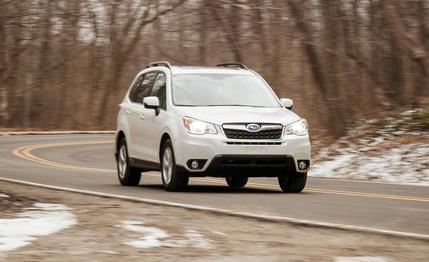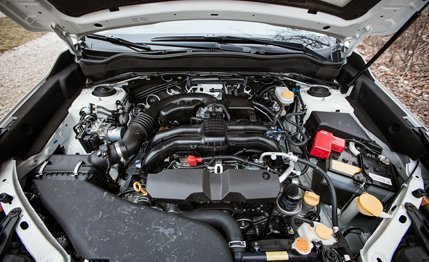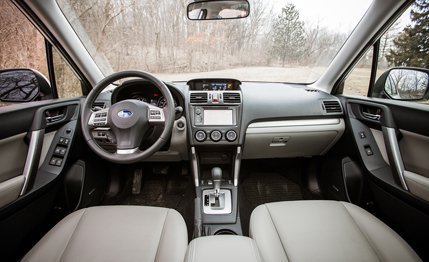 Instrumented Test
TESTED
Instrumented Test
TESTED
The Subaru Forester accounted for about 25 percent of Subaru’s total U.S. sales in 2012. Although impressive as a component of Subaru’s total picture, those Forester sales are less than a third of the numbers racked up by the Honda CR-V and Ford Escape, and that disparity, plus the arrival of a redesigned Toyota RAV4 and a more powerful engine option for the Mazda CX-5, might explain the slightly early debut of this major makeover.
Five years since its most recent total overhaul, the fourth-generation Forester is bigger in every dimension, most notably length—180.9 inches versus 179.5—and wheelbase, which is stretched by almost an inch to 103.9. The sheetmetal has been resculpted, yielding a sleeker, more contemporary look that’s an attractive step away from the blocky three-box tradition of yesteryear, and the new Forester exudes a sense of solidity.
We Recommend DIY Shifting
“All-new” is sprinkled liberally throughout Subaru’s 2014 Forester literature—new chassis, new 2.0-liter turbo engine option, new CVT gearbox with artificial steps programmed in when it’s bolted to the turbo engine. But the base engine is a carryover piece, being Subie’s sturdy 2.5-liter flat-four with 170 horsepower and 174 lb-ft of torque. It’s willing but far from thrilling.

The 2.5-liter—not the turbo—can be had with a six-speed manual, but our test car was equipped with a continuously variable transmission. This gearbox offers artificial steps to simulate gearchanges in the turbo model, but that programming was deleted from the 2.5-liter version. This of course means you’re always experiencing the usual CVT traits, specifically, a disconnected feel and the sense that the transmission is struggling to catch up with the engine at full throttle. To be fair, Subie’s new CVT is a plus in the fuel-economy department—24 mpg city and 32 highway, according to the EPA, versus 22/29 with the manual transmission. We averaged 19 mpg but, EPA ratings notwithstanding, would opt for the manual gearbox.
Comfort Priority
The Forester’s charter, especially in non-turbo form, is comfortable, quiet family transportation, a duty it performs well. The expanded package is roomier within, especially in the rear-seat area, which provides limoesque leg- and headroom. And there’s a bonus: The rear floor is flat, with no driveshaft-tunnel bulge stealing foot space, which makes the center seat reasonably comfortable, even for adults.
Subaru has raised the H-point of the seats slightly, and that, combined with a generous greenhouse, yields excellent drive sightlines as well as an airy feel to the cabin. This would be easier to appreciate if the front seats delivered a little more lateral support and comfort, but Subaru apparently doesn’t want anyone to confuse the Forester with a sports car.

There’s little danger of that, at least at this trim level. The suspension tuning is compliant, and body roll abundant. The basic target is obviously ride quality that irons out nasty pavement and washboard stretches of dirt roads—mission accomplished—as well as surprisingly effective suppression of road and wind noise.
Dirt-road footnote: Although most crossovers in this segment are moving away from their SUV roots in terms of ground clearance, the fourth-generation Forester adds to this specification. At 8.7 inches, it’s tops in class, making the Subie more useful than its competitors when the pavement ends.